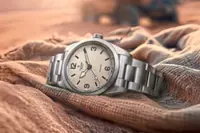Pezeshkian looking on as he attends a press conference in Teheran. — Reuters
FOR Iran’s leaders, engaging with the “Great Satan” to strike a nuclear deal and ease crippling sanctions may, for once, be the lesser of two evils.
Despite deep mistrust of the United States and President Donald Trump in particular, Teheran is increasingly concerned that mounting public anger over economic hardship could erupt into mass protests, four Iranian officials said.
That’s why, despite the unyielding stance and defiant rhetoric of Iran’s clerical leaders in public, there is a pragmatic willingness within Teheran’s corridors of power to strike a deal with Washington, the sources said.
Teheran’s concerns have been exacerbated by Trump’s speedy revival of his first term’s “maximum pressure” campaign, aimed at driving Iran’s oil exports towards zero and further crippling its fragile economy.
President Masoud Pezeshkian has repeatedly underscored the severity of the economic crisis, describing it as more challenging than during the Iran-Iraq war in the 1980s. This month, he pointed to the latest round of US sanctions targeting tankers carrying Iranian oil as a further blow.
One Iranian official said leaders feared that cutting off diplomatic avenues entirely might fuel domestic discontent against Supreme Leader Ayatollah Ali Khamenei, the country’s ultimate decision-maker.
“There is no question whatsoever that the man who has been the supreme leader since 1989 and his foreign policy preferences are more guilty than anybody else for the state of affairs,” said Alex Vatanka, director of the Iran Programme at the Middle East Institute think-tank in Washington.
Economic hardship pushed Khamenei to tentatively back the 2015 nuclear agreement with major powers, which led to a lifting of Western sanctions and brief economic relief.
However, Trump’s withdrawal from the pact in 2018 and the subsequent renewal of sanctions once again squeezed living standards.
“The situation worsens daily. I can’t afford my rent, pay my bills, or buy clothes for my children,” said Alireza Yousefi, 42, a teacher from Isfahan.
“Now, more sanctions will make survival impossible.”
Iran’s foreign ministry did not respond to a request for comment.
On equal terms
While tightening sanctions and threatening military action, Trump has also extended an olive branch, sending a letter to Khamenei proposing new nuclear talks.
Khamenei has spurned the offer, insisting Washington’s demands are excessive and that Teheran will not be bullied into negotiations.
“If we enter negotiations while the other side is imposing maximum pressure, we will be negotiating from a weak position and will achieve nothing,” Iran’s top diplomat, Abbas Araqchi, said in a recent newspaper interview.
“The other side must be convinced that the policy of pressure is ineffective; only then can we sit at the negotiating table on equal terms.”
A senior Iranian official acknowledged there is no alternative but to reach an agreement, though distrust of Trump makes the path forward uncertain.
Iran has staved off economic collapse largely thanks to China, the main buyer of its oil and one of the few nations still trading with Teheran despite sanctions.
Oil exports plummeted after Trump abandoned the nuclear deal but rebounded in recent years, generating more than US$50bil in revenue in both 2022 and 2023, according to US Energy Information Administration estimates.
Yet uncertainty looms as Trump’s maximum pressure policy seeks to throttle Iran’s crude sales with multiple rounds of sanctions on tankers and entities involved in the trade.
Simmering public anger
Iran’s rulers are grappling with multiple crises – energy and water shortages, a collapsing currency, military setbacks among regional allies and fears of an Israeli strike on its nuclear facilities – all intensified by Trump’s hard-line stance.
Decades of underinvestment in infrastructure, wasteful subsidies, declining natural gas production and inefficient irrigation have led to frequent power blackouts and water shortages.
The Iranian rial has lost over 90% of its value against the US dollar since 2018, according to foreign exchange data.
The worsening outlook has prompted many Iranians to convert their savings into dollars, gold or cryptocurrencies, further weakening the currency.
Rice prices have soared 200% in the past year, state media reported, while housing and utility costs have jumped roughly 60% in Teheran and other major cities, driven by the currency’s steep decline and soaring raw material costs.
Official inflation hovers around 40%, though some Iranian experts argue it exceeds 50%.
In January, the Statistical Centre of Iran reported that over a third of essential commodities had risen by 40% compared to the previous year.
The head of Iran’s Institute of Labour and Social Welfare, Ebrahim Sadeghifar, estimated that 22% to 27% of Iranians are now below the poverty line, while the Jomhuri-ye Eslami newspaper placed the figure closer to 50%.
“I can barely cover the rent for my carpet shop or pay my workers’ salaries. No one has the money to buy carpets. If this continues, I will have to lay off my staff,” said Morteza, 39, speaking from Teheran’s Grand Bazaar.
“How do they expect to solve the economic crisis if they refuse to talk to Trump? Just talk to him and reach a deal. You cannot afford pride on an empty stomach.”
A powder keg
Iranian state media reported at least 216 protests across Iran in February, involving retirees, workers, healthcare professionals, students and merchants. These demonstrations focused on economic grievances such as low wages and months of unpaid salaries.
Though largely small-scale, officials fear worsening conditions could trigger widespread unrest.
“The country is like a powder keg, and further economic strain could be the spark that sets it off,” said one official close to the government.
Iran’s leadership is acutely aware of the risk of a resurgence of protests akin to the 2022-2023 unrest over Mahsa Amini’s death in custody or the nationwide demonstrations in 2019 over fuel price hikes.
A senior Iranian official said high-level meetings had been held to discuss the possibility of new mass protests and potential measures to preempt them.
Despite these concerns, Teheran has drawn a red line, with officials stressing that “excessive demands” – such as dismantling its nuclear programme or missile capabilities – remain off the table.
“Yes, there are concerns about more economic pressure and public anger, but we cannot sacrifice our right to produce nuclear energy because Trump wants it,” the senior official said.
Ali Vaez, Iran project director at the International Crisis Group, said Iranian leaders believe negotiating under duress would signal weakness, ultimately attracting more pressure rather than reducing it.
“That is why Ayatollah Khamenei seems to believe that the only thing more dangerous than suffering from sanctions is surrendering to them,” he said. — Reuters





